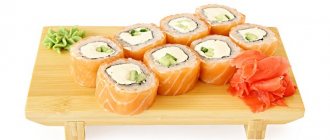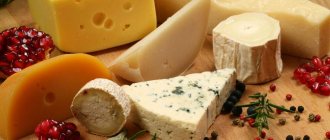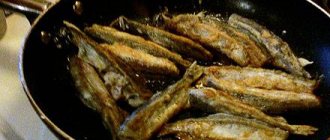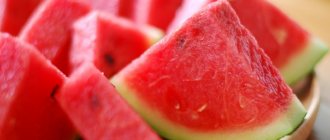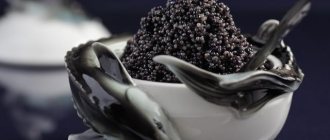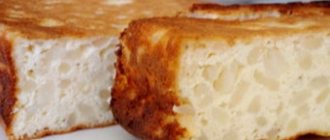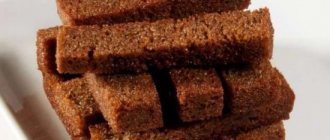History of Philadelphia Cream Cheese
As historical facts tell us, soft cheese with a similar composition was popular and widely used already in the 17th century in the country of gourmets - France.
In the next century, it won its audience among the prim British, and by the beginning of the 20th century, the production of this delicacy passed into the hands of the Americans. “Philadelphia” was created as a result of a gastronomic experiment by the American William Lawrence, who wanted to expose the recipe for the French Neuchatel cheese. The result will be a new species unknown to Europeans, and an enterprising American farmer began mass production of this delicacy.
Of course, the Philadelphia Cheese Corporation was bought out many times. Today it is in the hands of the huge Kraft Foods concern.
Philadelphia cheese: composition
As you know, soft varieties of cheeses do not ripen and are prepared much easier and faster. The peculiarity of Laurence cheese lies not in the method of preparation, but in its composition: premium milk is mixed with a variety of starters and thick cream. This combination creates a delicate, unobtrusive taste.
The process of its preparation is as follows:
- milk is pasteurized over low heat;
- after heating, the milk mixture is cooled;
- fermented milk starters are added to cold raw materials;
- leave for a day;
- put under a press to drain the liquid;
- add salt and other spices;
- packaged and packaged.
The calorie content of the final product is 342 kcal per pack, that is, per 100 grams. However, in Philadelphia cheese, the calorie content also depends on the fat content. Today on store shelves you can find more than a wide range of it: from thick 69% to light with only 5% fat.
The consistency of this type of cheese is soft, but thick - it definitely won’t spread over the dish. In appearance it most closely resembles oil. Additional flavor notes are created by various spices and mixtures of herbs, which are provided for in the manufacturer’s recipe.
Of course, the composition additionally includes stabilizers and thickeners.
However, Kraft Foods warns that all ingredients are natural and there are no preservatives in the cheese. It is the pasteurization of the milk mixture that allows the product to be stored for a very long time - 4 months. However, it is worth remembering that this shelf life is only valid for sealed packaging. An open box should be consumed within a week, and the product itself should be additionally wrapped in film.
Where is it used?
Although this delicacy originated in America, today it is included in the recipes of many dishes in both Europe and Asia. Moreover, some well-known ingredients in national dishes were replaced with “Philadelphia” (as we see in sushi). Today it is indispensable in most confectionery products: cakes, cheesecakes, cakes and desserts. It is an absolutely integral part of Japanese rolls.
Chefs are increasingly using it in salads and gravies, desserts and cream soups.
Its distinctive feature is that even when heated, the cheese retains its taste, which means it is ideally suited for baking and confectionery.
And its soft texture allows it to be used in buffet dishes, sandwiches and sandwiches.
How to replace Philadelphia cheese
Although cream cheese is more than delicious, this delicacy is not cheap. Especially if you are going to cook cheesecake or sushi for a large company. And not every store has it, and going to a shopping center is not always convenient. Therefore, it is worth choosing a more affordable substitute.
In terms of consistency and composition, Mascarpone is best suited. However, the prices for it are even higher than for Philadelphia. Therefore, enterprising housewives often use any other soft cheese, for example, Bucco or Almette. But there are other substitutes. It all depends on what exactly you are going to cook.
First of all, let us remind you that this element of gourmet cuisine should be replaced with an equivalent one, namely, with any other soft variety of cream cheese. But it is worth remembering that in addition to the consistency (thick, soft and viscous), there is also the taste of the product. Therefore, you should not use ordinary “Yantar”, “Korovka” or other processed cheeses. They have a completely different taste, which means they will not give the expected flavor note.
You can put softened Feta or Fetaki cheese in the rolls. Also add crushed cheese and mixed with sauce or sour cream (but not salted).
Baking is a little easier. Any other cream cheese mixed with cottage cheese is often added there. However, cottage cheese should be fatty and coarse-grained.
Particularly persistent cooks use a mixture of fatty homemade cottage cheese and sour cream, whipping them with a blender.
If you prepare the cottage cheese correctly and the mass comes out homogeneous, it will be as similar as possible to Philadelphia. You can also replace sour cream with heavy cream. After all, they are the ingredients of the original product. But this composition is only good for confectionery - it is not used in sushi.
Homemade Philadelphia Cheese Recipes
You can look for a store-bought substitute, or you can try making Philadelphia at home.
So, the cooking method:
- take 3 liters of homemade fat milk;
- a package of starter (can be regular) and enzyme (can be special for Philadelphia);
- Heat the milk over low heat until it boils;
- leave to cool;
- into the baked milk, which is still warm, but not hot, add a packet of enzyme and starter and stir;
- leave for half a day to thicken;
- after the specified time, a slightly thick mass will be obtained;
- pour it into a thick cloth or fine gauze folded many times;
- hang to separate the cheese from the whey - the mass should drain for about two hours;
- then we put it still in the cloth in a container and put it under a press in the refrigerator;
- after 3 hours, take it out and transfer the mass to a container;
- add salt to taste and stir;
- ready!
Another budget recipe for making Philadelphia cheese at home has a slightly different composition of ingredients.
You will need:
- half a kilo of cottage cheese - you can have fat, you can have low-fat, but the fat version is more viscous. However, if the cottage cheese is homemade, check that it does not have a specific smell, as this will affect the dish;
- 200 g glass of sour cream with a high fat content (from 20%);
- Cream, 200 ml – also fat (at least 30%);
- salt to taste.
The preparation method is very simple: all ingredients are whipped at high speed until thick. You can add salt and pepper or add herbs/herbs. Stir and leave for a day. Then we put it in the refrigerator for several hours and the delicacy is ready!
Philadelphia is a popular American cream cheese. The product is prepared from a mixture of cow's milk and varying degrees of fat content. The ingredient has become iconic for several national culinary traditions, and the volume of consumption of this particular type of cream cheese is growing every day.
The component is sold worldwide by Kraft Foods. The company produces several versions of the famous cheese, such as classic, low-fat, and multi-component (with additional admixtures of meat, herbs, and sweet ingredients).
A small rectangular plastic box with a 125-gram mass inside has filled all the grocery shelves of the world. But what really lies behind the beautiful marketing pitch?
Calorie content of Philadelphia rolls
It is extremely difficult to come up with the concept of “energy value” for a roll dish: calorie content per 100 grams varies greatly depending on the recipe, weight, amount of soy sauce (70 kcal - 100 g), etc.
Are Philadelphia rolls high in calories? Compared to the dishes familiar to Japanese residents, this result of culinary inspiration is like a piece of cake among loaves of bread. The traditional recipe stops at one ingredient wrapped in rice and nori: the salmon roll is a small portion of 180 grams with a low calorie content (128 kcal - 100 g).
Now let's see how many calories are in a Philadelphia roll. The energy value of this product can vary from 140 to 170 kcal (100 g) depending on the recipe:
- Philadelphia with cucumber – 145 kcal (100 g),
- classic Philadelphia with salmon - 168 kcal (100 g), since the avocado increases the energy value of the product,
- Philadelphia light (without avocado or cucumber) - 173 kcal (100 g),
- Philadelphia with eel - 164 kcal (100 g).
For the hot Philadelphia (tempura) dish, the calorie content will be 150 - 208 kcal per 100 grams, depending on the filling and batter. A mixture of corn and rice flour and starch combined with frying oil tends to increase calories.
Now let's calculate how many calories are in a serving of Philadelphia sushi. Let’s take “average” Philadelphia rolls: the calorie content per 100 grams will be 142 kcal. Let's start with how much one roll weighs: on average, the weight is 1 piece. equals 41.7 grams. The entire dish will weigh approximately 250 grams, respectively, for Philadelphia rolls the calorie content of a serving will stop at 355 kcal.
Determine how many calories are in Philadelphia rolls, 8 pcs. and 6 pcs. not difficult: usually the weight of the original product is approximately the same, but division can be done into 6-8 pieces.
No one can accurately count the calories in Philadelphia rolls: varying the weight, recipe, ingredients, percentage of products makes this task impossible. The approximate calorie content of Philadelphia rolls with salmon is 142 kcal, the energy value of a serving (6-8 pieces) is 355 kcal.
Composition of Philadelphia roll: BJU
The question of how many carbohydrates are in Philadelphia rolls may seem quite interesting due to the specifics of the balance of BJU (proteins, fats and culprits). Let's look at the nutritional value of this product.
Useful elements are the following composition (Philadelphia sushi - 100 g):
- Proteins - 9.7 g,
- Carbohydrates - 10.8 g,
- Fat - 6.7 g.
The most dangerous indicator for lovers of dietary products is confidently taking the lead, but Philadelphia rolls make up 14% of the daily requirement for proteins and only 4% for carbohydrates (2000 kcal diet per day). Fats make up 9% of the daily value.
The composition of Philadelphia rolls (PZHU) is characterized by low calorie content with a high content of proteins and fats. When thinking through the menu, this preponderance of balance must be taken into account.
Philadelphia rolls: ingredients and beneficial properties
What ingredients do you use to make a Philadelphia roll? The composition of this dish, which has won many hearts, is quite simple. But what beneficial functions does each product have for the body? Let's get a look.
- Rice
: contains trace elements and minerals (iron, calcium, selenium, phosphorus, manganese), vitamins (E and B), complex carbohydrates (provide energy); removes toxins and impurities, working like a sponge; improves sleep. - Salmon
: rich in vitamins (D, B12, E), non-produced omega-3 and 6 fatty acids, microelements; contains animal fats and proteins. - Philadelphia cheese
: provides the lion's share of the dish's calorie content (fat content is about 70% of weight) and is nutritious; useful in vitamins (B, A, K, E) and microelements (phosphorus, zinc, iron, selenium, potassium). - Nori (seaweed)
: rich in plant protein; contain vitamins (C and A) and minerals (phosphorus, iodine, iron); reduce cholesterol levels; increase immune defense. - Cucumber
: supplies organic acids; rich in fiber and vitamins; relieves swelling and helps with the absorption of fats and proteins. - Avocado
: has a high content of vitamins (C, A, K, E), minerals (copper, chlorine, cobalt, sodium), and monosaturated fats.
The nutritional value and delicate taste of Philadelphia rolls are complemented by a careful selection of ingredients that provide a balanced diet. The dish takes into account the body's daily nutritional needs, and the products used to prepare sushi are minimally processed with temperature and retain their beneficial properties.
The energy value of Philadelphia rolls is provided by complex carbohydrates or proteins and fatty acids, which are considered healthy calories. As a bonus, the Japanese tradition does not provide for the rapid absorption of food, so you will have to enjoy your food meaningfully and with pleasure. Feel free to include sushi in your diet!
This dish has a unique composition. The Philadelphia roll is perfect for saturating the body with useful elements and satisfying hunger for a long time; it is easy to digest. However, you should pay attention to the calorie content: when you consume more than 8-12 pieces, the risk of gaining extra pounds increases significantly.
Every year the popularity of Asian cuisine is growing in our country. You can try them in cafes and restaurants. A large number of recipes from Japanese, Chinese, Indian and Thai cultures are published on the Internet. Following them, it is easy to prepare one or another interesting and tasty dish at home. Sushi and rolls are especially famous.
general characteristics
Cream cheese is a soft cheese made from cream. The peculiarity of the product is the taste: it is moderately cheesy, with light neutral or sweetish notes.
Another difference between the group of cream cheeses is the ripening period. Philadelphia, unlike other soft cheese products like Neuchatel or Brie, simply does not have it.
Mascarpone and Boursin are considered to be closest to the taste, structure and consistency of creamy products.
In addition to Philadelphia, the group of cream cheeses includes French Chavroux, Petit-suisse, and Norwegian Snofrisk (they differ in taste, composition and fat content).
Of all the cream cheeses, Philadelphia is the most popular. The product is sold in 94 countries around the world due to its unique taste, natural composition, gastronomic versatility and affordable price.
Cheese has been able to become part of modern popular culture. Philadelphia is the main component of the classic American cheesecake, which is a packaged symbol of creative “freedom” and rolls, beloved in the post-Soviet space, which have moved from the category of exotic food to the most consumed.
Historical reference
The history of the iconic cheese begins in 1872. An average dairyman, William Lawrence, who was popular among the locals, moved to Chester, New York, where he decided to create a completely new cheese product. Lawrence considered his creation a real gastronomic revolution: he eliminated the ripening period, eliminated long aging, complex technological solutions, thereby reducing the cost of production by more than 5 times.
William Lawrence introduced a completely new product to the market, which attracted not only the gurus of the gastronomic industry, but, most importantly, buyers. An ordinary milkman created the perfect combination of full-fat milk and delicate cream, which cheese-making gurus had already tried to replicate before Lawrence.
In the 80s, dairymen and cheese makers wanted to repeat the unprecedented success of the creator of the French cheese Neuchatel. Craftsmen tried to create a unique dish with minimal time and money. William Lawrence was the first to succeed, and it was he who received fame, money and coveted recognition in culinary circles.
Since 1880, cheese production has acquired an industrial scale. Empire Company received the rights to the product. The food concern packaged the soft, creamy texture in foil, put a commercial logo on it, and transported it across continents. In 1903, the rights to the cheese were purchased by the Phenix Cheese Company of New York together with the Philadelphia trademark. The increase in industrial turnover occurred in 1928. Demand and productivity growth was driven by the merger of Phenix Cheese Company of New York and Kraft Cheese Company.
The company's employees polished their skills, the cheese makers perfected the classic recipe, looked for new combinations, and the marketing department did its best to introduce the product into the refrigerators of every first American.
In 1912, Philadelphia began to be pasteurized. The new product was so loved by the public that the Americans created New York Cheesecake. This is the most popular cheese pie in the world. The classic recipe, the main ingredient of which is pasteurized Philadelphia cheese, has become a cult favorite and is featured not only in housewives’ cookbooks, but also on the menus of Michelin-starred restaurants.
After pasteurization, the history of cream cheese comes to a standstill for a while. The thaw occurred in the 30s. The owner of the legendary Jewish restaurant Turf, Arnold Reuben, has perfected the New York dessert and created his own Philadelphia cheesecake. The dessert created a real sensation, and the small restaurant at the intersection of Broadway and 49th Street became a place of pilgrimage not only for ordinary consumers, but also for the best chefs. Ruben perfected the recipe for a dessert from Antiquity and hit the real jackpot. Thanks to cream cheese, another name has risen to the top of the culinary Olympus.
In modern culture, cream cheese is used not only for authentic cheesecakes, but for rolls, desserts and the simplest homemade recipes like a roll or a sandwich.
Use of the ingredient in cooking
Philadelphia is a unique product. It is perfect for both a homemade sandwich and a gourmet restaurant dish. Cheese has become the main component of iconic dishes such as the classic American cheesecake or the Philadelphia rolls of the same name, which indicates the gastronomic popularity of the component.
Classic cheesecake recipe
We will need:
- Philadelphia cream cheese – 600 g;
- shortbread dough – 200 g;
- sweetener to taste (you can use regular sugar, honey, banana, Jerusalem artichoke syrup, muscovado);
- whole grain wheat flour - 1.5 tablespoons;
- cream (the classic recipe uses a product with a fat content of 35%) – 250 ml;
- egg yolk – 1 pc;
- chicken egg – 3 pcs;
- gelatin (recommended for use in the form of plates) – 8 g;
- vanilla pod – 1 pc.
Preparation
Line a baking tray with baking paper, place the shortbread dough in a cooking ring (focus on a diameter of 30 centimeters). Preheat the oven to 180°C, place the dough in it for 15-20 minutes until the cake becomes golden. Remove the finished cake and leave for 30 minutes at room temperature until completely cooled.
In a convenient container, mix cream cheese with your chosen sweetener. Beat the beans from the vanilla pod into the same container. Then add whole grain flour, 40 milliliters of cream, and separately the yolk. Using a blender, puree the ingredients into a smooth, flowing mass.
The walls of the culinary ring must be lined with parchment, otherwise the filling will simply stick to the metal form. Pour the prepared mixture onto the crust and place in the oven for 60 minutes at 100°C. Check readiness with a toothpick.
To make the glaze: soak gelatin sheets in filtered liquid for 5 minutes. Mix 2 tablespoons of water in a saucepan and bring to a boil. Wait until the sugar syrup has cooled completely, then add it and 200 milliliters of cream to the finished mixture. If you are using a natural sweetener, then skip this step and immediately add the sweetener to the gelatin (note that the consistency of the glaze may differ significantly from the classic version).
Remove the finished cheesecake and leave at room temperature until completely cooled. Pour glaze over the cold cheese mixture and place in the refrigerator for 1-2 hours.
Making the glaze can be omitted from the recipe. You will get a classic cheese pie without any additional flavor notes. Please note that the finished cheesecake may be slightly uneven and the cheese layer may crack in some places. Glaze can mask these imperfections and make the dessert perfect. Instead of frosting, you can use slices of fresh fruit, nuts and other edible decorations.
Calorie table of the most popular rolls
The calorie content of rolls depends directly on their variety and on average adds 200-300 kcal to the diet.
Delicious recipe! How to bake carp in the oven without foil
The calorie content of rolls depends directly on their variety.
Using the table, you can find out the calorie content of any type of sushi and choose the lowest-fat options:
| Name | Calories per 100 grams |
| Philadelphia | 143 |
| California | 175 |
| Avocado | 105 |
| Banzai | 144 |
| With cucumber | 80 |
| With eel | 110 |
| Dragon Maki | 188 |
| Canada | 150 |
| With salmon | 115 |
| Samurai | 122 |
| Tokyo | 155 |
| Harumaki | 242 |
| Tempura | 129 |
| Zucchini maki | 86 |
The lightest are the Avocado, Cucumber and Zucchini Maki rolls.
Rolls according to Dukan
Dr. Dukan's diet involves eating exclusively seafood and allows daily consumption of sushi.
For the Dukan diet, rolls are prepared in a special way: crab and salmon are removed from the recipe, white rice is replaced with brown rice.
For a successful diet, it is recommended to add soups, juices and teas to sushi. The classic recipe includes brown rice, crab sticks, nori, cucumbers, avocado, cottage cheese.
With avocado
To prepare avocado rolls, you will need to purchase nori seaweed, round or brown rice, and avocado.
Procedure:
- Pour water over the rice, boil and simmer for 10-15 minutes.
- Prepare and cut the nori into two halves, chop the avocado.
- Place the seaweed on the table, add rice, avocado, and form a roll.
- Allow time to soak (10 minutes), cut into 6-8 pieces.
- Serve on a plate with a slice of avocado.
"Philadelphia"
Philadelphia rolls have 142 kcal. They are rich in easily digestible protein and fiber, which promote weight loss.
The seafood included in the composition increases mental and physical activity, saturates the body with iodine and iron.
For cooking you need:
- Divide the nori sheets into several parts and boil the rice.
- Gradually place cubes of cheese, herbs, and cucumber on the seaweed.
- Top with rice, wrap salmon in a thin strip, cut into pieces.
"California"
California rolls are a popular and high-calorie variety.
100 g contains 176 kcal, which makes them not the best option on a diet.
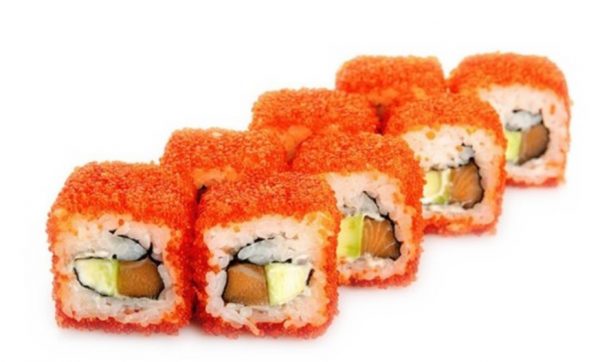
Rolls "California"
The products included in the dish (crab meat, tobiko, mayonnaise) affect its calorie content.
Note! Crab meat is a strong allergen. Frequent consumption of such rolls can provoke allergies.
Crab can be replaced with crab sticks or lean fish, tobiko (flying fish roe) with red caviar. It is recommended to exclude mayonnaise.
With cucumber
Cucumber rolls are the lowest calorie type. Cucumber contains a lot of organic acids and fiber, which is useful for a person losing weight. This type of delicacy can easily be prepared in your kitchen.
For cooking you will need:
- Boil 200 g of brown rice, separate the nori sheets, finely chop the cucumber.
- Place a layer of rice on an unrolled seaweed sheet and add chopped cucumber in the middle.
- Form a roll and cut into 6 equal-sized pieces.
Calorie content of salmon roll
Salmon rolls, or shake maki , are popular among healthy eaters due to their low calorie content - 128 kcal per 100 g.
Fresh salmon is used for cooking - a storehouse of vitamins B, A, E and D, selenium, zinc and minerals. Doctors do not recommend eating such rolls often, as they can cause a slowdown in metabolism and constipation.
Shrimp roll calorie content
The traditional shrimp roll recipe includes shrimp, red onion, lettuce, and several types of sauces, making them greasy and heavy on the stomach.
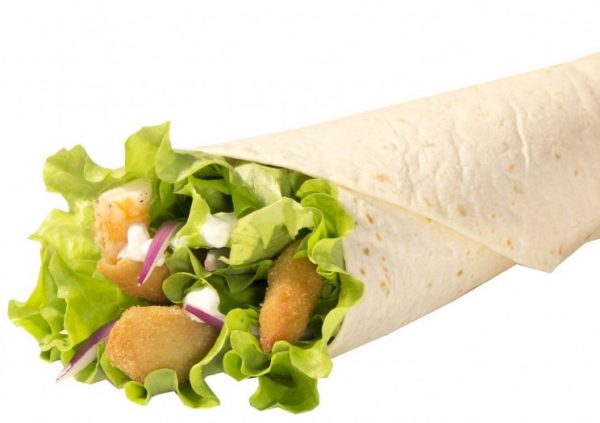
Shrimp roll is a fat-containing fast food dish.
Delicious recipe! Cooking ginger at home recipe
Depending on the ingredients, their calorie content can vary from 294 to 445 kcal, which excludes them from the list of low-fat dishes.
Note! Shrimp roll is a fat-containing fast food dish. Replacing the ingredients will not be able to bring its calorie content below 294 kcal.
When preparing this type of roll at home, you should exclude mayonnaise and yogurt, replacing it with green sauce. It is recommended not to use pita bread, crackers and cook the dish in the oven.
What you need to know about cream cheese
Cheese has long occupied a separate shelf in our refrigerator. Almost all consumers love it, regardless of gender, age and culinary preferences. It seems that this universal product simply cannot be harmful or, even worse, dangerous. Few people think about the actual composition of products and the fact that the words “cheese” and “fat” are real synonyms. According to the Physicians Committee for Responsible Medicine, 70% of the component composition of the cheese product is trans fats and only the remaining 30% is healthy calcium, vitamins and nutrients.
Almost all manufacturers are cunning with dosages and, frankly speaking, overdo it. The main argument for adding salt is to prevent the development of harmful bacteria. But the level of dietary sodium in cheese products is as high as possible, which is why cheeses are the saltiest dairy products. Scientists complain that high levels of dietary sodium can be addictive. The average salinity per 100 grams of product is 1.7 grams, while the recommended daily value is 2,300 milligrams.
According to Consensus Action on Salt and Health, cheese products rank 3rd in terms of salt content. Bread takes first place, followed by...
Different types of Philadelphia contain a certain amount of salt. Read the ingredients and choose the purest products possible so as not to harm your health.
Hormones
Hormones from cow's milk do not disappear during processing and are transferred to dairy products in the same volume. Scientists often even find pus from a cow’s bladder in beautiful cheese packages with the inscription “organic” and sketches of a chamomile meadow. Why is this happening? Manufacturers care much more about their income than about the quality and safety of production. They try to get milk from a cow in almost any way. An increase in milk volume occurs due to antibiotics and hormones. Unnatural enzymes stimulate increased milk production, which is dangerous for humans:
- osteoporosis;
- hormonal imbalance;
- breast cancer;
- prostate cancer;
- severe food poisoning;
- malaise;
- malfunction of the nervous system.
Drugs
Cheese is truly addictive and addictive. Scientist Adam Drewnowski conducted a study in the 90s that showed that people addicted to fat and sugar benefit from the same medications as drug addicts. In the book Salt, Sugar and Fat, another healthy eating enthusiast, Michael Moss, is shocked by the rate of cheese consumption. We use cheese products as a sauce, condiment, and addition to every meal. Our ancestors enjoyed cheese as a separate dish or even dessert, so they consumed the maximum allowable amount of fat and did not suffer from a number of diseases that have become the scourge of the modern generation.
Calorie content of sushi and rolls - table and diet
Japanese cuisine has gained unprecedented popularity in just a few years. Sushi and rolls have become one of the favorite delicacies for all segments of the population. However, adherents of healthy eating are always worried about the same question - how high in calories this food is. How many calories are in sushi, and is it possible to eat this dish while losing weight?
The rich selection of dishes in Japanese restaurants always makes you think. On the one hand, all the sets look appetizing, and at first you can try any of them to understand what the food is like. On the other hand, the calorie content of sushi is completely different; the menu contains both vegetarian dishes and mixes with seafood and meat.
What are the advantages of Japanese cuisine
- The Japanese philosophy involves maximum trust in nature and immersion in it. Therefore, sushi is usually created based on natural products.
- A harmonious combination of ingredients is an important aspect of the exoticism and sophistication of a dish.
- Seasonings allow you to experience the unusual taste and enjoy the peculiarities of Japanese dishes.
- The original design attracts attention, Japanese food looks very aesthetically pleasing and arouses interest and a desire to try amazing dishes.
The energy value of sushi is so low that you can spend a fasting day on this dish.
What products are Japanese dishes made from?
The main ingredient of rolls is rice. Properly prepared, it allows the body to quickly get enough. It contains carbohydrates and fiber - microelements vital for every person.
Fresh, smoked and salted fish, which is also one of the components of a complete Japanese dish, gives sushi a special taste. The freshness of the entire dish depends on the quality of the fish.
Professional chefs - specialists in making sushi - know how to combine ingredients in such a way as to achieve the highest taste harmony.
Rolls with salmon, tuna and eel are quite popular in Japanese restaurants; they are very nutritious, but low in calories.
Seafood, which is also indispensable during the cooking process, must be fresh and added to the rice in a certain quantity.
Vegetables, seaweed and seasonings play a special role in making sushi. Some of these ingredients add piquancy to the dish, while others are added to enhance or subdue the unusual flavor of the fish or seafood. The most popular vegetarian dish is rolls with avocado and cucumber.
What is the benefit
- First of all, it is worth noting that this is a low-calorie food, which may well serve as the basis for a diet.
- The calorie content of Japanese cuisine varies, however, it does not exceed the calorie content of flour products and desserts. That is why restaurants with a similar assortment are more often visited by lovers of healthy food than coffee shops and eateries that offer fast food.
- Rice, seafood and vegetables contain large amounts of microelements that the human body lacks. By eating freshly prepared sushi, you can compensate for the deficiency of fiber, carbohydrates, phosphorus, vitamins and other substances.
Rolls are great for split meals.
The volume of one serving is quite small, but they are satisfying and allow you to quickly satisfy your hunger.
Sushi diet
Going on a diet and at the same time eating well without consuming extra calories is a great option.
Since the roll is a very filling product, and the portions are small in volume, you can distribute meals throughout the day so that the body receives enough nutrition and at the same time consumes a minimum of calories.
For example, Philadelphia allows you to get enough satiety with a low calorie content of the product. Vegetarian rolls with vegetables, seaweed and mushrooms are also perfect for your diet.
What is the sushi diet? First of all, this is fractional nutrition. Taking into account calories, you should create a menu for the day so that each meal includes sushi or rolls. In total, the entire daily diet should not exceed 1000 kilocalories.
Contraindications for use
- Don't get carried away with Japanese cuisine. It is quite unique, so one day a week is enough when you include one or two rolls in your diet, such as Philadelphia, California, Alaska or sushi, the basis of which is seaweed and vegetables, for example, a roll with cucumber.
- You should be very careful with raw fish. If you decide to prepare the dish yourself at home, make sure that all ingredients are fresh.
- Sushi has a very short shelf life, so when ordering it at a restaurant, check how long ago the dish was prepared. When making them at home, it is better not to put them in the refrigerator, but to eat them freshly prepared.
Calorie table of the most popular rolls
Philadelphia and California rolls are the most popular in Japanese restaurant chains. Firstly, a set of 6-8 pieces is an excellent meal replacement.
Secondly, these are the two most delicious and beloved types of sushi. Philadelphia contains rice, salmon, cucumber, avocado, Philadelphia cream cheese, and seaweed.
The calorie content of such rolls is inferior to any spring roll or hamburger.
California roll is made from rice, tobiko flying fish roe, crab meat, seaweed and cream cheese. Cucumber and avocado are added. As you can see, these two options are similar in composition, but their taste is completely different.
The calorie content of Philadelphia and California rolls allows you to enjoy the taste of an exotic dish without gaining weight.
Sushi for weight loss: advice from a nutritionist (video)
The calorie content of sushi is indeed quite suitable for dieting. However, before you start losing weight using Japanese cuisine, you should consult a nutritionist to get a successful result.
How would you rate this material?
Source: https://AveSlim.ru/pitanie/kalorijnost/sushi.html
Is it possible to eat cheese
You can eat cheese, the main thing is to adjust the dosage. Try to stretch out 1 pack of Philadelphia over the week. If during the day you are tempted by a portion of rolls with cream cheese at your favorite sushi bar, then refuse the cheese sandwich in the evening. Start counting calories, nutritional supplements, and look at food from a scientific point of view. Regulating your diet will not only protect the body from dangerous diseases, but will also improve the quality of your skin, sleep and body.
Another important rule: choose cheese, not a cheese product. This way you will protect yourself from fake trans fats and harmful components. Falsified vegetable fat is much cheaper for manufacturers, but it costs a person not only a lot of money, but also health. Read the ingredients carefully, don’t be fooled by fakes, find “your” supplier, or learn how to make cheese yourself. An abundance of ingredients and culinary equipment will help start the process and take care of all the “dirty work”. Who knows, maybe, in addition to quality portions of cheese, you will get a platform for a future business.
Pregnant women should be especially careful about cheese consumption. Food ingredients made from unpasteurized milk contain Listeria monocyotogenes. The bacteria cause listeriosis, which causes jaundice, fever, muscle pain, chills and vomiting. Agree, not the most suitable conditions for an expectant mother. Moreover, such deterioration of the condition may well cause miscarriage, premature birth, sepsis or pneumonia in the unborn baby. Mothers are allowed to consume only hard, heat-treated varieties, but after giving birth, you can be tempted by a serving of your favorite Philadelphia.
If you can't imagine your life without cheese, then use healthy alternatives in the form of goat and sheep dairy products. This is the healthiest cheese consumption option available. 30 grams of goat cheese contains 2 times less fat and salt, and the vitamin composition is incomparably richer and higher quality than cow cheese. Read the ingredients, know when to stop, look for healthy replacements for your usual foods and be healthy.
Philadelphia cheese got its name in honor of the American city. This place is famous for many exquisite and delicious dishes since ancient times. This type of cheese does not require long ripening, therefore it has a rather significant advantage over other analogues. What is Philadelphia cheese made from and how is it prepared? What can you prepare and how useful is this product? You will find out the answers to these questions by reading the article.
Calorie table for California and Philadelphia rolls. Calorie content of sushi and rolls in convenient tables
Rolls are traditional Japanese rolls that consist of rice, fish and seaweed . To prepare the simplest rolls, the cook takes boiled rice and fish, and then wraps them in nori seaweed. After this, the cook cuts the rolls into small rolls.
In this case, the fish can be replaced with any other filling to your liking. Instead of fish, you can use shrimp, meat, cucumbers, cheese, and so on. In Japan, rolls are usually eaten by dipping them in soy sauce, but ketchup, barbecue sauce, etc. can be used instead of soy sauce.
If necessary, the rolls can be deep-fried or smoked.
Calorie content of main types of rolls
The calorie content of rolls directly depends on the components that make up them:
- The main component of the rolls is boiled rice, the calorie content of which is about 100 kcal per 100 g of finished product (however, remember that one roll contains less than 100 g of rice).
- The rolls also contain fish, meat or vegetables, which add additional calories.
- The rolls also contain nori seaweed. Although these algae are quite high in calories (about 300 kcal per 100 g of product), one roll contains only a small amount of algae, so they do not make the rolls too high in calories.
Calorie content of foods and ready meals for weight loss
Let's now calculate the calorie content of the rolls that Russians most often buy:
- California rolls. These rolls contain rice, seaweed and crab meat or crab sticks (Surimi). Optionally, spicy wasabi sauce, avocado, cucumbers and some other ingredients can be added to the rolls. A standard portion of California rolls consists of 5-8 rolls, the total weight of which is about 200-300 g. The calorie content of 100 g of California rolls is about 100-130 kilocalories.
- Philadelphia rolls. These rolls contain rice, seaweed, salmon, and soft Philadelphia cheese, which is why the rolls got their name. Optionally, avocado, caviar, cucumbers and some other components can be added to such rolls. A standard portion of Philadelphia rolls consists of 6 or 8 sushi rolls. The calorie content of 100 g of Philadelphia rolls is about 140-150 kilocalories (the protein in such rolls is about 10 g, carbohydrates - about 11 g, fat - about 6-7 g).
- There are also other types of rolls, which include eel, tuna, cucumbers, shrimp, and so on. The calorie content of such rolls will depend on the type and amount of filling.
Calorie table per 100 grams
The table below shows the calorie content of the main types of rolls. It should be understood that these figures are approximate, and the calorie content of the roll in each specific case depends on the amount of rice and filling, as well as on the cooking method.
Harris Benedict formula: rules for calculating calories for weight loss
| Variety of sushi rolls | Calorie content per 100 g of product |
| "California" | 140-150 kcal |
| "Philadelphia" | 100-130 kcal |
| With cucumber | 100 kcal |
| With salmon | 115 kcal |
| With eel | 110 kcal |
| With shrimp | 105 kcal |
| With tuna | 130 kcal |
| With avocado | 110 kcal |
Also, 100 grams contains approximately:
- Proteins - 9.7 g.
- Fats - 6.7 g.
- Carbohydrates - 10.8 g.
Calorie content of Philadelphia sushi per 100 grams
It is important for people who are on a diet to know how many calories are in Philadelphia sushi.
Calorie content depends on the composition of the roll, the presence of additional ingredients (avocado, cucumber), and the type of fish used (salmon, trout). 100 grams of the classic product contains 142 kcal.
The weight of one serving, as a rule, reaches 250 grams, the dish is divided into 8 pieces. Thus, in 1 pc. Philadelphia contains 45 calories.
The role of sushi and rolls in losing weight
If you choose the right ingredients, rolls can be dietary and benefit the body. Sushi on a diet saturates the body with microelements and helps you lose weight while giving up sweets and unhealthy foods.
It is recommended to strictly monitor the amount of sushi: the daily dose should not exceed 20 pieces. Rolls themselves do not affect fat burning, but together with dietary dishes they can activate metabolism.
Avoid fried rolls
It is worth understanding that when losing weight, sushi fried in batter is a forbidden dish: this method of preparation and oil can double the calorie content of the dish.
Frying sushi requires a lot of oil and special breadcrumbs (tempura), which contain a lot of fat. It is better to be content with vegetable sushi with classic seafood.
Don't get carried away with cream cheese
Another tip for losing weight is to avoid rolls with cream cheese. It contains a lot of saturated carbohydrates, its consumption slows down digestion and promotes weight gain.
Excessively large amounts of cheese have a negative effect on the liver and increase cholesterol levels.
Skip the toppings
Sushi contains many ingredients that add weight to the dish. Toppings in Japanese cuisine can include extra sauce, avocado, pieces of crab and flying fish roe.
These foods increase the calorie content of food, so they should be excluded.
Replace white rice with brown rice
White rice itself is difficult for the body; it contains a lot of fat, which takes a long time to be absorbed in the body and slows down metabolism. It is better to replace white rice with brown rice.
The latter contains a lot of magnesium and zinc, which are important for the normal functioning of the body. In addition, brown rice is a natural source of fiber, which helps burn fat.
Sashimi (raw fish without rice) is the best option
The best option on a sushi diet is sashimi
The best option on a sushi diet is sashimi - a variety of raw fish without garnish. Such nutrition saturates the body with iodine and fluoride, but it is not recommended for everyone.
Some people's bodies are unable to accept raw fish, resulting in nausea and gastrointestinal problems. Only certain types of fish can be eaten raw. Salmon, scallops, sea bass, etc. are used to prepare sashimi.
Source: https://pro-acne.ru/trenirovki/skolko-kalorij-v-rollah-i-sushi-tablitsa-filadelfiya-na-100-g.html
What it is?
Philadelphia cream cheese was invented by William Lawrence in 1872. Cheese making in America was not very developed at that time and recipes had to be looked for abroad. Namely in France, which was famous for the production of many types of this product. Recipes of the most expensive varieties were taken as a basis. Mostly these were cream and curd cheeses. The result was a cheap and quickly prepared dairy product with an exquisite aroma.
The consistency of the product is very delicate, more like cream, and this is exactly what the cheese looks like. After all, cream is used to prepare it, and sometimes milk is added. Various additives help diversify the cheese and emphasize its soft, creamy taste. It could be fruits, vegetables, berries or onions.
Philadelphia cheese is very easy to prepare. Whole cow's milk is pasteurized, cooled and combined with sourdough. Within 20 hours, curd grains are formed. After this, the product is freed from whey and is ready for packaging. Depending on the recipe, various spices and herbs, vegetables or fruits are added to the cheese. This simple description can be applied to this product.
If the packaging indicates that it is curd cheese, then it is not Philadelphia, but its analogue. This way you can significantly reduce the cost of the product. But the taste and consistency must be on par. It is better to give preference to already proven manufacturers.
Does the sushi diet make sense?
Nutritionists say that the use of rolls as a staple food can only be justified if the dosage is correct . One serving (about 6 pieces) contains approximately 250-350 kilocalories (depending on the type of filling), and a person should eat about 2-2.5 thousand kcal per day. Therefore, rolls can be eaten in small portions every day. You also need to remember that rice, fish and seaweed contain various vitamins and beneficial microelements that make rolls an even more healthy product.
Delicious recipe! Restaurant dishes made from vegetables
Stremousova Valeria Evgenievna
Endocrinologist, nutritionist, member of the Russian Association of Endocrinologists
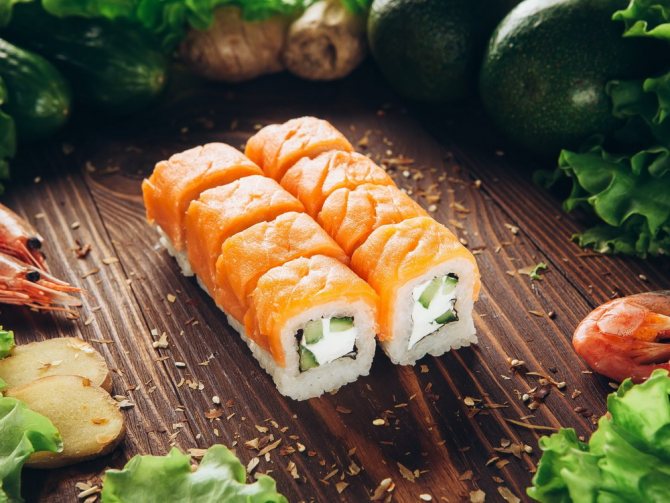
In the modern world, more and more people are paying attention to their figure. Every second person monitors their diet, calculating nutritional requirements and counting the number of calories. Rolls, having a low energy value and a large number of beneficial properties, have become a popular dish among those who are on diets but do not want to give up delicious food. And the most popular question that arises among connoisseurs of oriental cuisine is how many calories are in Philadelphia rolls, because this is the type that is ordered most often. An accurate calculation will help make your diet as balanced as possible. You will be able to avoid adding extra pounds and not miss the opportunity to eat deliciously.
Cheese composition
The product contains only natural ingredients. The content of any other preservatives indicates that this cheese is of low quality, and it is highly undesirable to consume it. It is done in less than a day.
Despite the fact that the curd product is produced without chemicals, it has a shelf life of 4 months. But this is subject to unopened packaging. Once the cheese is opened, it should be used within a week. Store in the refrigerator, in thick cling film.
If the expiration date is greater than 4 months, it means that chemicals were used in production. This may adversely affect your health. And there is little overall benefit from such a product.
Philadelphia cheese is considered a curd cheese. It is made according to the same principle as cottage cheese. The only difference is that cottage cheese is boiled, and cheese is made from whole pasteurized milk using sourdough.
Fermentation time is 21 hours.
Making Philadelphia cheese is a very fast process compared to other varieties. This is what affects its cost. This product is available to everyone, although it belongs to elite varieties.
Recipe with sour cream
Philadelphia cheese can be prepared at home in an even simpler way without factory-made sourdough.
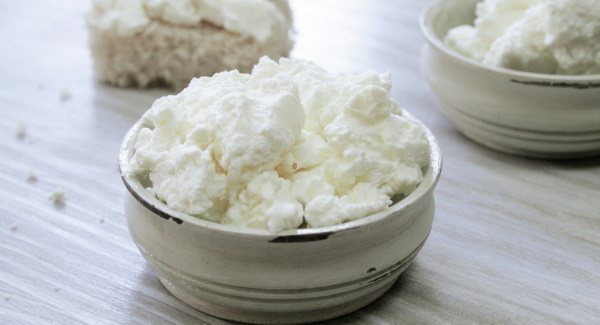
Preparation next.
What ingredients will you need?
For natural homemade cheese you will need the following available products:
- 0.5 tbsp. fat sour cream, at least 20%;
- 1 tbsp. ryazhenka 2.7-3.5%;
- 1 tbsp. medium fat kefir.
Step-by-step cooking process
All components must be at the same room temperature, so you need to remove them from the refrigerator in advance:
- First, combine all the ingredients in a deep bowl and stir well to obtain a homogeneous mass.
- Now you should place the resulting mass in a colander lined with several layers of damp, clean cloth, placed horizontally over a high container. It is advisable to cover the top of the milk mass with a lid or plate so that the surface does not become airy and dry out prematurely.

- Next, it is advisable to place the entire structure in the refrigerator for a period of 24 to 48 hours to remove the whey and compact the mass.
- After this, carefully remove the fabric and transfer the finished product to an airtight food container.
What can I add?
If the cheese is not being prepared for dessert, then when mixing fermented milk products it is recommended to add a small amount of salt, which will make the taste of the finished dish brighter and richer.
Serving rules, decoration
You can make very delicate desserts or healthy sandwiches from this homemade cheese.
Nutritional value and calories
Philadelphia cheese, depending on its fat content, is divided into 3 categories:
- classic – 69%;
- light – 12%;
- very light – 5%.
The average calorie content of Philadelphia cheese is 342 kcal.
The ratio of BJU in Philadelphia cheese is as follows:
- proteins = 5.94 g (7%);
- fat = 34.25 g (90%);
- carbohydrates = 4.08 g (5%).
It is worth noting that the product contains many different vitamins and minerals.
- Vitamin A.
Participates in processes throughout the body. It helps improve vision and strengthens the immune system. This vitamin is especially necessary during the season of colds and viral infections. So in the fall and winter, the amount of Philadelphia cheese consumed can be increased. - B vitamins.
This is a real treasure for those who want to improve the functioning of the nervous system. Has a beneficial effect on digestive function. A sufficient amount of these vitamins increases the body's resistance to various diseases, especially during colds. - Vitamin RR.
Best known as niacin. It has a beneficial effect on the condition of the skin, helps get rid of dermatitis and ulcers, and normalize metabolic processes. - Vitamin E.
Tocopherol has a positive effect on the reproductive function of the body. It has a positive effect on the functioning of the cardiovascular and nervous systems. Plus, vitamin E helps lower cholesterol. Reduces the risk of cancer.
Many minerals (iron, calcium, copper, zinc, magnesium, potassium, phosphorus) have a positive effect on the musculoskeletal system.
Philadelphia cheese does not have many ingredients, but it is very healthy. Its vitamin and mineral composition can compete with many fruits and vegetables.
Calorie content of sushi: benefits and composition
21 July 2020 Admin page » Important nutritional points
Do you like sushi? Then find out everything about the calorie content of any rolls. List of calorie content of the most popular types of sushi. What are the benefits of sushi and can you get better from it?
It's time to talk about the calorie content of sushi, which has become too popular both in cafes and as home-cooked food. What is their success? First of all, the roll has a balanced composition; its ingredients allow it to be consumed by adherents of proper nutrition and athletes.
Basically, rolls include:
- nori;
- boiled rice;
- Red caviar;
- red fish;
- shrimps;
- cucumber;
- avocado;
- seafood.
The benefits of sushi and rolls
The list above contains tasty, healthy and satisfying foods that are included in a healthy diet, for example:
♦ NORI – contains the trace element iodine, which is so important for the normal functioning of the thyroid gland. In addition, these algae are rich in vitamin A, ascorbic acid, phosphorus, calcium and do not include fats. Help strengthen the immune system and bone tissue. Ensure normal functioning of the brain and heart.
♦ RED CAVIAR AND FISH – an expensive delicacy in large quantities, but tasty. It contains beneficial fatty acids, phosphorus, iron, iodine and folic acid. They help strengthen bones and vision, and also prevent atherosclerosis.
♦ AVOCADO – in large quantities interferes with weight loss, but in sushi there is a minimal amount of it, which helps break down cholesterol in the blood, having a healing effect on the body.
♦ SEAFOOD – predominantly rich in protein and omega-3 fatty acids, which are beneficial for normal heart function. It is worth knowing that calories from protein are aimed at preserving muscle mass and are not stored in subcutaneous fat, and the excess in the body is excreted by the kidneys.
According to standards coming from Japan, a serving is considered to be 6 rolls with a total weight of 220-250 grams.
Despite the many varieties of sushi and rolls, the most popular in our area are the Philadelphia and California rolls, and let’s talk about them:
Calorie content of Philadelphia rolls
In fact, this type of rolls was invented in Europe, most likely they have gained such popularity and include the following:
- rice;
- nori;
- Philadelphia cheese";
- salmon or salmon;
- avocado;
- soy or rice sauce
Calorie content ranges from 100-150 kcal. per 100 gr. If we compare 1 roll, then its calorie content is about 40-50 kcal.
The final calorie content depends on the filling of the roll and its size. One serving of roll is about 200 grams, so the caloric content of a serving will be 240-400 kcal.
Calorie content of California rolls
This sushi has some variations; the outside is sprinkled with caviar or sesame seeds.
On average, the weight of a standard portion is 175 g. consists of 6 pieces, and the calorie content reaches about 200-225 kcal. To determine their calorie content, you need to understand the type of filling:
Rolls with salmon
The rolls are small in size, since the filling is mainly fish, so the calorie content is low and is about 120 kcal. per 100 gr. or with an increased portion of about 220 kcal. at 180 gr.
Rolls with eel
Calorie content fluctuates around 100-150 kcal. depending on the type and quantity of eel (smoked, raw or fried). A standard serving contains about 170-190 g.
Rolls with cucumber
If you're a vegetable lover and struggle with excess calories every day, then this California variety will be to your liking. In a serving weighing 180 g. will be only 180 kcal, which is a good food for weight loss.
Calorie content of 1 sushi
Depending on the filling, the calorie content differs:
- shrimp – 60 kcal;
- eel – 51 kcal;
- caviar – 39 kcal;
- salmon – 38 kcal;
- scallop – 24 kcal;
- squid – 22 kcal;
What can be prepared from the product?
When you have a package of such delicious cheese as Philadelphia at your disposal, it is very easy to diversify your menu. They eat cheese with any ingredients. It goes well with all types of foods.
Philadelphia is often used as the basis for preparing various creamy soups. To ensure that the soup has a creamy taste and a soft, delicate consistency, add 1 tablespoon of the product to the finished dish before whipping. The process of preparing such a dish is somewhat reminiscent of whipping a milkshake.
Asian soups also call for the use of Philadelphia cheese. It is added to both chicken and seafood dishes a few minutes before cooking. The consistency in this case becomes delicate, white in color with a delicate creamy taste.
There is a very interesting dessert recipe that all guests will appreciate. Place layers of cheese in transparent bowls and top with jam or preserves. You can decorate everything with slices of your favorite fruit or pieces of berries. Melted chocolate, ground cinnamon or nuts would be a great addition. This delicacy is very easy to prepare, but simply delicious in taste.
Adding Philadelphia cheese to your smoothie will make the drink more nutritious and healthy. It goes very well with apples and bananas.
According to consumer reviews, it follows that this type of cheese makes a magically tender cheesecake. His recipe is presented below.
Required ingredients:
- Philadelphia cream cheese – 600 gr.;
- 200 gr. pre-prepared shortcrust pastry;
- honey, sugar or syrup of your choice;
- flour – 1.5 tablespoons;
- 250 ml cream, the fattier the better, ideally 33%;
- 1 egg yolk;
- 3 eggs;
- gelatin in plates – 8 g;
- vanilla.
Preparation.
- Take a round baking pan and line it with paper. It is good to use dishes with a diameter of up to 30 cm. The dough should be evenly distributed on the bottom. Bake for about 15-20 minutes in an oven preheated to 180 degrees.
- In a separate container, mix cheese, honey or syrup (the sweetener you chose), vanilla, sifted flour, 40 ml of cream, eggs and 1 yolk. It is best to use a blender for mixing. This will make the consistency more uniform.
- Now you need to carefully cover the walls of the mold with baking paper. After this, place the filling on the crust and spread evenly using a spatula. Place in the oven for 1 hour at a temperature of 90-100 degrees. In order to check whether the cake is baked or not, you can use a toothpick.
- While the cheesecake is in the oven, it's time to make the frosting. Gelatin must be soaked in water for about five minutes. Place sugar and 2 tablespoons of water in a saucepan. Boil. Cool completely. When the syrup has cooled, it must be mixed with gelatin and cream. The glaze is ready.
- The cheesecake should be cooled completely at room temperature and only then covered with glaze. Then place in the refrigerator for 2-2.5 hours.
Philadelphia (Philadelphia) is a cream cheese invented in America in 1872 in the city of Chester by milkman William Lawrence and named after the city famous for its quality food. A distinctive feature of Philadelphia cream cheese is that its preparation does not require ripening or infusion, which at one time made it a revolutionary and cheap product to prepare. William Lawrence, when preparing soft Philadelphia cream cheese, tried to imitate French cheese, because France at that time was the most advanced country in the field of cheese making. Focusing on the best versions of expensive French cheeses, William Lawrence created a cheap and original American product.
A little later, the rights to produce soft Philadelphia cheese were acquired by the Kraft cheese company and its owner James Craft was able to pasteurize it, and it was in this form that Philadelphia cream cheese was used in the first New York Cheesecake - a pie that later gained worldwide fame and became one of the symbols New York. Nowadays Cheesecake is prepared using various ingredients, even finding a replacement for Philadelphia cream cheese, but it is with soft Philadelphia cream cheese that the Cheesecake turns out the most delicious.
Philadelphia cheese is a type of cream cheese with a soft and delicate taste, made from milk and cream. Analogues of Philadelphia cheese among cream cheeses include Mascarpone and Boursin cheese.
How many calories are in rolls and sushi per 100 grams, calorie content per serving
Philadelphia rolls are a type of roll with the rice inside out. This means that in Philadelphia rolls (unlike traditional ones), only the key ingredients will be inside the nori sheet, while the rice remains outside. In addition, the Philadelphia roll is wrapped in thinly sliced salmon or salmon fillets, and sometimes sprinkled with sesame seeds.
Calorie content of Philadelphia rolls – 142 kcal per 100 g. product
Let's look at the energy value using a specific example - let's take the classic "Philadelphia" as a basis.
List of ingredients:
- Pressed seaweed (nori) enriches our body with vitamins A and C, carbohydrates and minerals. Nori helps get rid of varicose veins. Sea plants improve immunity and reduce cholesterol levels.
- Rice - includes vitamins of groups E, PP and B, trace elements and minerals. It is the white grains that are responsible for neutralizing toxins in the body thanks to coarse fibers.
- Salmon – contains groups of vitamins B12, D and E. The fish delicacy enriches our body with omega fats and healthy amino acids.
- Philadelphia (cheese) – rich in vitamin complex A, B, E, K, PP, minerals and macroelements. Cheese promotes better digestibility of food, in particular fatty fish.
The calorie content of Philadelphia rolls of the Japanese serving size is 142 kilocalories per 100 grams.
Nutritional value is presented: proteins – 9.7 g, fats – 6.7 g. and carbohydrates – 10.8 g.
Features of the composition
Now all catering establishments are required to indicate the calorie content, as well as the ratio of BZHU dishes of Japanese cuisine in the menu. Such data must be indicated in any version of the menu: printed or electronic. This is due to the fact that the names of the dishes may be the same, but the composition may differ significantly.
Dietary delicacies will be those that include:
- apples;
- Chuka salad;
- masago caviar;
- flying fish caviar;
- variety of seafood;
- Chinese cabbage;
- iceberg lettuce";
- tomatoes, cucumbers, bell peppers, jalapenos, daikon;
- dill, sesame, ginger, asparagus;
- mamenori and nori;
- Shiitake - mushrooms.
Products with a higher calorie content that may be found in the composition are:
- avocado;
- smoked chicken, bacon;
- salmon, tuna, eel, yellowtail, snapper, mackerel;
- various sauces: spice, Unagi, Tempura, honey mustard, barbecue and mayonnaise;
- different types of cheese: mozzarella, parmesan, cream;
- Japanese omelette "Tomago".
The main ingredient in cooking is rice. Feel free to ask the staff a question about the type of rice used in the establishment for cooking.
Also, when cooking at home, you need to take into account the calorie content of each individual product to calculate the final energy value of the food.
California rolls are another version of the rice-turned rolls (that is, they are not wrapped in nori, like traditional rolls). They are considered the second most popular after Philadelphia rolls.
Calorie content of California rolls – 130 kcal per 100 g. product
The calorie content of one California roll is about 59 kcal per 100 g. product
Recommendations
Most classic Japanese dishes are high in calories. Some of them can be left in the diet and still avoid weight gain.
Some nuances will help with this:
- Hot, baked and sweet rolls will have the highest energy value. They will also be the fattest. Therefore, if possible, these species should be excluded from the diet.
- Sushi will have the lowest dietary value; it is served in small portions to prevent overeating.
- Wasabi and soy sauce are traditional high-calorie additives. It is necessary to choose food that does not contain, or at least a minimal amount of, various high-calorie sauces or soft cheese.
- You should not combine the consumption of sushi and rolls with soda or alcohol. Alcoholic drinks do not allow the body to control appetite, increasing the risk of overeating.
- 15–20 minutes after eating sushi, you should drink warm green tea. It will help food be better absorbed and prevent the accumulation of excess weight in the body.
How many calories are in Philadelphia rolls?
If you have time and decide to make homemade rolls, then don’t be surprised that the calorie content of homemade rolls will be higher than that of a traditional Japanese dish. It's all about the recipe and the ingredients used.
When counting calories, you should focus on the following data:
- · Rice – 332 Kcal per 100 g;
- · Salmon – 195 Kcal per 100 g;
- · Vinegar – 11 Kcal per 100 ml;
- · Soy sauce – 68 Kcal per 100 g;
- · Wasabi – 57 Kcal per 100 g.
When adding salt or pickled ginger, you should also consider its calorie content. So, 100 grams of ginger contains approximately 15 kilocalories.
When making calculations, you may encounter a situation where the manufacturer indicates calories not for one serving, but for the whole dish. At the same time, rice with salmon is much lower in calories than a similar portion with tuna. If you stuff rolls with shrimp, avocado or cucumber, the average calorie value will be approximately 100 Kcal per 1 roll (6 pieces)
Calories – 169 kcal, proteins – 6 grams, fats – 4 grams, carbohydrates – 28 grams.
| Product | Calorie content, kcal | Squirrels, gr. | Fats, gr. | Carbohydrates, gr. |
| Roll Unagi | 173 | 5,3 | 8,3 | 19,2 |
| Roll California | 176 | 7 | 8,8 | 17,2 |
| Avocado Roll | 105 | 2 | 1,3 | 21,2 |
| Roll Philadelphia | 142 | 9,7 | 6,7 | 10,8 |
| Roll Chidori | 163 | 8,5 | 8 | 14,3 |
| Roll Syake Unagi Maki | 150 | 8,5 | 7,1 | 13,1 |
| Roll Alaska | 90 | 4,2 | 2,7 | 12,2 |
| Roll Kyoto | 155 | 8,4 | 6,3 | 16 |
When studying the menu of a particular bar or restaurant, you can find two options for information:
- calorie content of rolls per 100 grams;
- energy value of the entire portion.
Perceiving type 2 information is much easier and more convenient. And for every 100 grams you need to additionally calculate how much the entire set will weigh.
Approximate weights:
- 1 sushi weighs about 20 g;
- 1 roll from 20 to 50 g, usually 6–8 pieces per serving.
- The traditional Philadelphia roll has an energy value of 197 kcal per 100 g. A serving consists of 8 pieces with a total weight of 263 g. Therefore, the total calorie content will be 518.11 calories.
- The energy value of a spice roll with tuna is 157 kcal per 100 g. A serving consists of 6 pieces with a total weight of 117 g. This means that the calorie content will be 183.69 kcal.
To determine the energy value of culinary delights created at home, it is convenient to use special online calculators on websites.
This type of roll is filled with fish, namely salmon.
Calorie content of salmon rolls – 115 kcal per 100 g. product
- Unagi with eel – 174–186 kcal/serving;
- Philadelphia with salted salmon – 189–210 kcal/serving;
- California with smoked salmon – 196–204 kcal/serving;
- Philadelphia with cucumber and avocado – 124–137 kcal/serving;
- Futo roll with perch – 138–197 kcal/serving.
Even taking into account the low calorie content, nutritionists do not recommend eating sushi and rolls in the evening. They contain a lot of carbohydrates, which give the body the energy it needs in the first half of the day. In the evening, light protein foods are better.
You may also like
Source: https://avrora22.ru/skolko-kkal-rollakh/
The benefits of Philadelphia cheese
Philadelphia soft cream cheese is a dairy product that has most of the beneficial properties of milk, since the natural milk in it is minimally processed. Soft Philadelphia cheese contains vitamins A, B (1, 2, 5, 6, 9, 12), K, PP, E, beta-carotene, choline. Philadelphia cheese is rich in macro- and microelements, including copper, selenium, iron, zinc, phosphorus, manganese, sodium, calcium, and potassium.
The benefit of soft Philadelphia cream cheese is that it is very nutritious; a person receives from it most of the substances necessary for the functioning of the body: minerals, vitamins, amino acids, proteins. The result of moderate consumption of Philadelphia cheese will be a general strengthening of the body, strengthening of the immune system, and a surge of strength and energy.
What can you substitute for Philadelphia cheese?
There are several options for food products such as Philadelphia cheese that can be used to replace it in culinary dishes. As a rule, it is better to replace soft Philadelphia cheese with other creamy cheeses like Mascarpone cheese. But besides this, in some cases, curd cheeses for baking are suitable as a replacement.
You can try mixing one of the cheeses “Almette”, “President”, “Viola” with cottage cheese in a 1:1 ratio, it should taste something like Philadelphia cheese. You can also try replacing Philadelphia cheese with a mixture of full-fat cottage cheese and heavy cream or sour cream.
You can, of course, try to replace soft creamy Philadelphia cheese with food products of similar taste, but to obtain the original taste of the dishes, it is recommended to follow the recipe strictly and use only Philadelphia cheese if it is specified in the recipe.
The simplest option
To prepare Philadelphia cream cheese according to this recipe, you only need three ingredients:
- 300 g of cottage cheese of any fat content (to your taste).
- Two pinches of salt.
- One large chicken egg.
In order for the cheese to turn out with the ideal texture, it is necessary to comply with the norm of products. The egg must be fresh and large (can be replaced with three quail eggs), the cottage cheese must be soft.
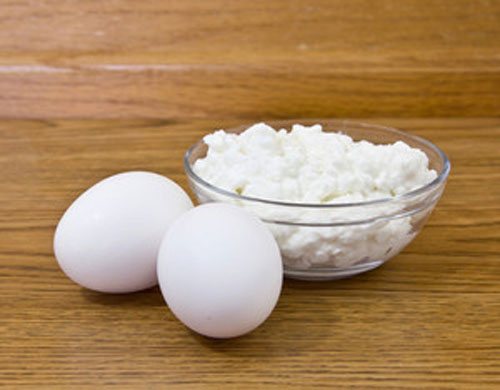
Preparing cream cheese:
- Beat the egg and salt in any available way: using a food processor, mixer or blender. Beat on high speed for about three to four minutes. The mass should turn white and increase in volume.
- It is advisable to mash the cottage cheese with a fork or rub it through a sieve before adding it to the bowl with the egg.
- Add the cottage cheese to the egg and beat at high speed for three to five minutes until the grains disappear completely.
Transfer the prepared Philadelphia curd cheese into a bowl. It can be used to make puff pastries, cheesecakes, pies, or simply spread on bread. Store in the refrigerator for a day, no more.
